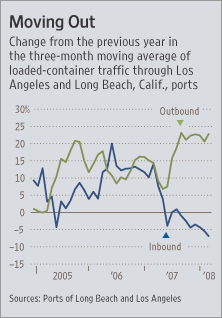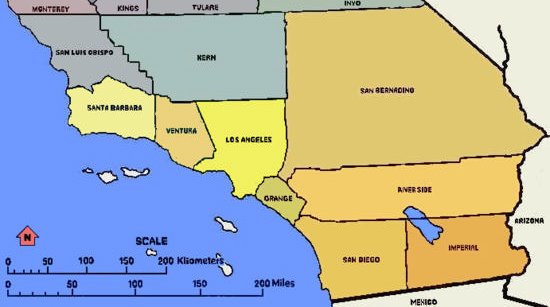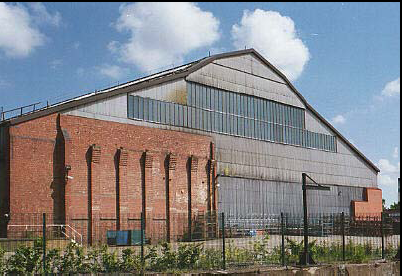


Back to Local Markets
WHERE THE ACTION IS
Perhaps I should qualify. Where there is action, it’s on the local level. Now that plentiful financing has been squeezed from the market, there is no more room for mega projects, program development, or new concepts. It’s back to basics and that means individual businesses and landlords dealing with their own unique decisions. Loans are available through SBA programs but limited to business expansions. Local banks that were not burned by sub-prime also have resources for conservative lending. The land side is virtually dead for development except under the most risk averse situations. There is however considerable activity in securing tenants for build-to-suit, but locating sites is still a challenge.

Container Freight Volumes Decrease

If there is one major driver that supports Los Angeles Industrial real estate, it is counted by container shipments that enter the Ports of Los Angeles and Long Beach. These shipments are singularly responsible for the development and leasing of large blocks of high-cube industrial space. When goods are flooding into the ports, industrial building development booms throughout Southern California.
Continue reading “Container Freight Volumes Decrease”

INFILL LAND
In the competition for industrial real estate investments, more institutionally backed buyers are dabbling with infill land, but have not yet found the formula for success. Infill sites are considered non-traditional investments because they take more effort to understand and come with substantial risk. Large buyers can not make as big an investment in infill as when they purchase a portfolio of buildings. For this reason, and until institutions learn how to roll up these non-core properties, there is still a great opportunity for smaller entrepreneurial buyers to distinguish themselves as experts in the field.

Inland Empire and Beyond the Basin

Until recently my clients preferred to stay close to home and were satisfied with property offerings in the LA Basin. Now, I’m driving more, especially east. Many are recognizing that pricing for modern buildings in the Inland Empire is considerably less on a square foot basis. Employee housing in the region is currently ”on-sale” because of sub-prime loans. Communication has improved such that top management no longer needs to reside in the production facility on a daily basis. The Inland Empire can serve as a more functional location than being buried inside Los Angeles. Finally, developers are frustrated with the limited industrial opportunities in L.A. and need to follow the growth.
Continue reading “Inland Empire and Beyond the Basin”

Commodity Vs. Developer Property
There are two types of property we sell. Commodity properties are typically found on the MLS and are generally offered to Users. Developer properties are land deals that will ultimately be developed into a commodity property. While it is a tidy distinction, owners of each make mistakes because they don’t understand the differences from a deal-making perspective. Each property type has its own logical steps to marketing, representation, legal, and negotiation.

Expolding Land Values
n my past few newsletters I discussed the enormous potential for land. These days, older property is being purchased for the underlying land value. The major impetus is the evolution from single story development to multi-story. Use of air rights increase the value of land in areas that have never experienced mid rise development. The proposition is obvious in dense urban areas like Pasadena, Downtown Los Angeles, Anaheim or West LA; however, mixed use is expanding throughout the entire region.

Post Industrial Land Use
When the last few aircraft factories close, we will have witnessed the complete deindustrialization of major plants in Los Angeles. Big steel, auto, tires, and glass are all gone. In their place are retail centers, big box distribution, a smattering of public buildings, and new urbanist housing.
Continue reading “Post Industrial Land Use”

Gardena In Crisis
Gardena is on the brink of insolvency because of a failed insurance investment and poor governing. While desperate to right itself, Gardena’s effort points to a generation of bad decisions. As we enter a period of scarce State and Federal resources, cities like Gardena will be even more dependent on their own management abilities.

Underutilized Sites
The value proposition is overwhelming when comparing old, obsolete structures to developing say, a 3-story residential condominium. We often see redevelopment returns of 2 and 3 times compared to what is currently being generated at an older property. All industrial property with a decent location is open to reuse. A growing population, increased densification and worsening traffic mean there is continual opportunity in underutilized property.
Continue reading “Underutilized Sites”

